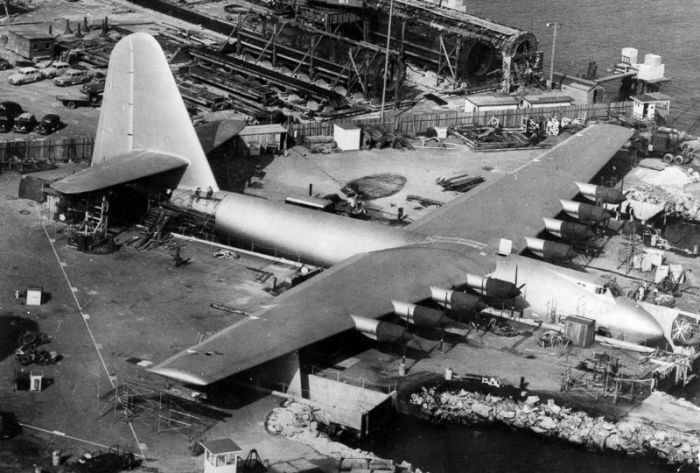|
|
History: Spruce Goose, Hughes H-4 Hercules
|
Design and development
In 1942, the U.S. War Department was faced with the need to transport war materiel and personnel to Britain. Allied shipping in the Atlantic Ocean was suffering heavy losses to German U-boats, so a requirement was issued for an aircraft that could cross the Atlantic with a large payload. Due to wartime priorities, the design was further constrained in that the aircraft could not be made of metal.
The aircraft was the brainchild of Henry J. Kaiser, a leading Liberty ship builder. He teamed with aircraft designer Howard Hughes to create what would become the largest aircraft built at that time. It was designed to be capable of carrying 750 fully equipped troops or one M4 Sherman tank. The original designation "HK-1" reflected the Hughes and Kaiser collaboration.
The HK-1 contract was issued in 1942 as a development contract and called for three aircraft to be constructed under a two-year deadline in order to be available for the war effort. Seven configurations were considered including twin-hull and single-hull designs with combinations of four, six, and eight wing-mounted engines. The final design chosen was a behemoth, eclipsing any large transport then built. To conserve metal, it would be built mostly of wood (its elevators and rudder were fabric covered); hence, the "Spruce Goose" moniker tagged on the aircraft by the media. It was also referred to as the Flying Lumberyard by critics. Hughes himself detested the nickname "Spruce Goose".
|
|









